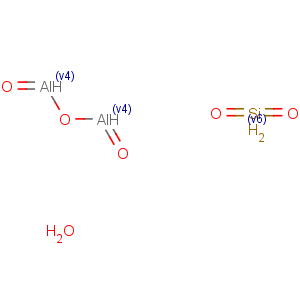Title: Bentoquatam
CAS Registry Number: 1340-69-8
CAS Name: Quaternium 18-bentonite
Synonyms: bis(hydrogenated tallow alkyl)dimethylammonium complex with sodium bentonite
Trademarks: Bentone 34 (Rheox); Ivy Block (Enviroderm); Tixogel VP (United Catalysts)
Literature References: Ion exchange addition product of the montmorillonite clay, bentonite,
q.v., and
quaternium-18, a dimethyl, ditallow quaternary ammonium salt containing predominantly C18 alkyl chains. Acts as a barrier to block urushiol,
q.v., from the skin. Prepn of aliphatic ammonium bentonites: E. A. Hauser,
US 2531427 (1950); and organophilic properties: J. W. Jordan,
J. Phys. Colloid Chem. 53, 294 (1949);
idem et al., ibid. 54, 1196 (1950). Use as stationary phase in GSC and HPLC: D. W. Grant
et al., J. Chromatogr. 99, 721 (1974). Description of properties, toxicology and use in cosmetics:
J. Am. Coll. Toxicol. 1, 71-83 (1982). Clinical trial in poison ivy/oak dermatitis: J. G. Marks, Jr.
et al., J. Am. Acad. Dermatol. 33, 212 (1995).
Properties: Hydrophobic, thixotropic organoclay with gel-like consistency. Expansible in water, methanol, ethanol, isopropanol, sorbitol, glycerine, acetone. Heat stable up to 500°. Resists base or acid attacks over pH range of 3-11.
Use: Emulsion stabilizer in cosmetics. Stationary phase in chromatography.
Therap-Cat: Barrier for the prevention of allergic contact dermatitis.

